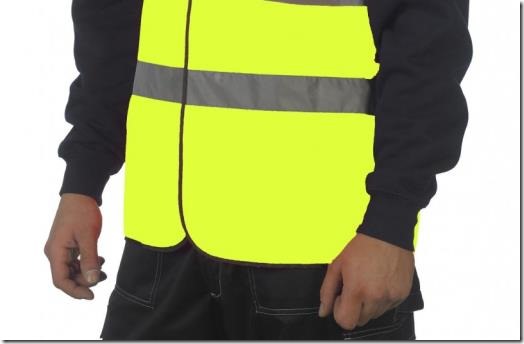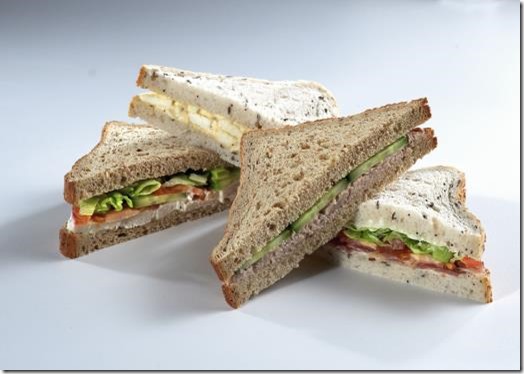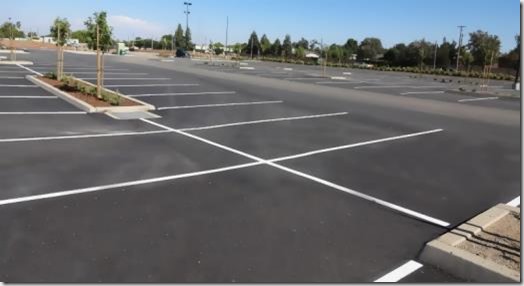Note that this is an old article from 2012! I say that, because it’s been getting hits in mid-2019. All references to DSA are, of course, referring to DVSA in 2019. Also, in 2019 you might be asked to drive forwards into a bay, then reverse out again.
I wrote an article a while back explaining how to reverse park into a bay, which has been popular and which several people have told me they found useful.
Obviously, not everyone in the world reads this blog, and they go on to various web forums to find the answers to problems they have with driving. Unfortunately, they get fed some utter crap as a result.
On one forum (frequented by student types) someone has asked how they would find their “bay parking reference point” in their own car. It’s a sensible enough question as long you accept that one way (there are others) of bay parking IS to use a reference point in the sense that they meant it.
Someone – who I believe is classed as an “advanced driver” – has responded:
DSA stupidly get you to approach away from the selected bay and then start the reverse from that position which is at 90% to the bay!!!!
This is complete bullshit – there is no “DSA way” – and this so-called “advanced driver” also refers to the “non-DSA way”. The DSA doesn’t care how you reverse into the bay as long as you’re in control and safe. Their DT1 document says:
AT THE START OF THE TEST
…They should be asked to drive out of the bay to the left or right (if both options are available in that car park) and stop with the wheels straight before reversing into any convenient bay and parking the car (examiners should not instruct candidates to park in the centre of the bay). The instruction is to prevent them reversing back, into the bay on the same lock.
Providing some attempt has been made to straighten the front wheels, examiners should not be concerned if the wheels are not completely straight. The candidate may elect to drive forward to adjust the angle at which they address the bay they intend to reverse into, or space permitting, they are allowed to drive forwards into one bay before reversing back in a straight line into the opposing bay.
AT THE END OF THE TEST
On the approach to the centre the candidate should be advised to turn into the car park and reverse into any convenient bay to park the car. The candidate can again make their own choice of bay and carry out the manoeuvre in the way that they choose, given the restrictions that may be imposed by the characteristics of the car park.
Nowhere does it say they have to be at 90 degrees to the bay they intend to reverse into. It’s the candidate’s choice how they do it – all they must do is drive out of the bay to the left or right (if they’re already in one) and straighten the wheels to prevent them cheating and just going back in along the path they took as they moved out. They can drive into bays on the opposite side if these are free, utilising whatever space is available – just as they would do in real life.
The total misinformation given by this guy will now be taken as gospel by those who have been unfortunate enough to read it. That’s how bad driving starts – with bad information. So it’s ironic that in this case it should come from a member of a group which has a far higher opinion of itself than the reality would indicate. It’s just a shame that the accuracy of its knowledge is severely corrupted by its feelings towards the DSA. There is NO “DSA way” to bay park.
It’s also worth noting that this same “advanced driver” – who is not an ADI – has been berated on several other forums for his often nonsensical advice.
The 90 degree method is often easier for people who find reversing difficult. And more importantly, since their they have just one chance to get it right on their driving test, it is often the most reproducible way. But it isn’t the only way, and candidates can choose whichever method suits them best.
To answer the original poster’s question…
How do I find the bay park reference point in my own car?
It’s quite easy. Find an empty or quiet car park and drive forwards into one of the middle bays (i.e. those not backed by kerbs or walls). Make sure you’re nicely centred.
Now, just do the manoeuvre in reverse. Drive forward very slowly until your shoulder is level with the end of the bay and stop. As you start moving again very slowly, get full lock on quickly and continue forward until you are at 90 degrees to the bays, straighten your wheels, then stop (or you could stop first, then straighten your wheels as you move again – it’s up to you). Finally, move forward about another 15cm/6 inches and stop.
You should now have a reference point with one of the adjacent lines that you can commit to memory.
You might need to tweak it a bit if your car control is initially a bit clumsy, but this is how to set the reference position if you use the 90 degree method. Then you need to practice the actual manoeuvre to get a consistent routine – it won’t work if you sometimes dry steer, sometimes lurch backward as you release the handbrake, sometimes roll forward or backward, and so on.
Reversing in from 90° confuses other drivers, doesn’t it?
No. In a busy car park, it is up to you to decide how to park. There will be occasions when you decide to drive straight into a bay head first – if someone is following close behind, for example. But don’t try and convince yourself that the 90° reverse method is any more inconvenient than the angled reverse. It isn’t.
If you see an empty bay and you intend to drive into it – forwards or backwards – signal your intention, and then position yourself accordingly.
 a few years now.
a few years now.



 lay “keepy-up” for hours on end – but he seldom has any cause to do it when he is playing a match. However, the skills required to play “keepy-up” are his bread and butter, and without them he would not be a player of a very high standard. Oh, he could thrash his way around the field, and use his muscles and brawn to pole-axe opponents, but that would simply be a mask to hide his lack of proper skill.
lay “keepy-up” for hours on end – but he seldom has any cause to do it when he is playing a match. However, the skills required to play “keepy-up” are his bread and butter, and without them he would not be a player of a very high standard. Oh, he could thrash his way around the field, and use his muscles and brawn to pole-axe opponents, but that would simply be a mask to hide his lack of proper skill.